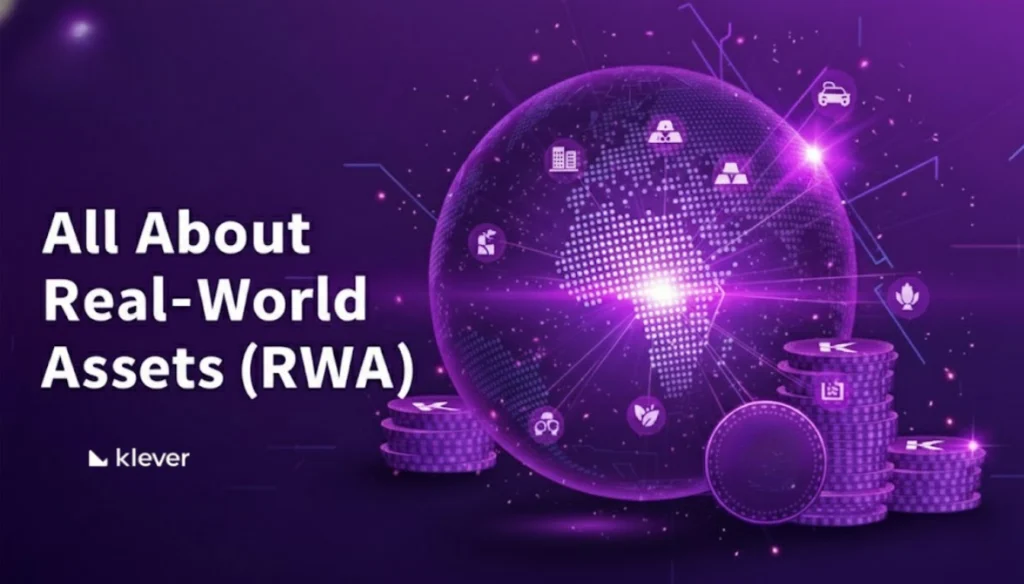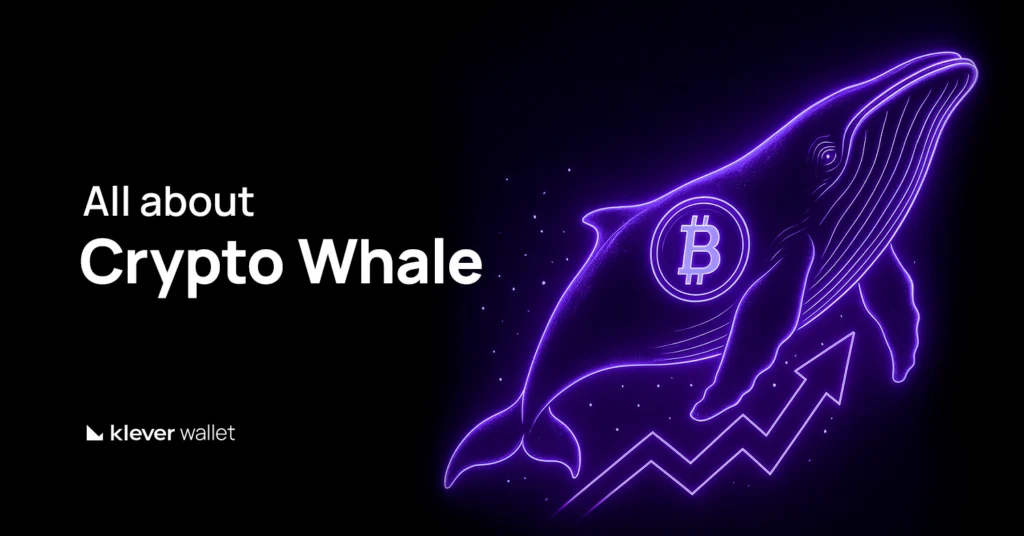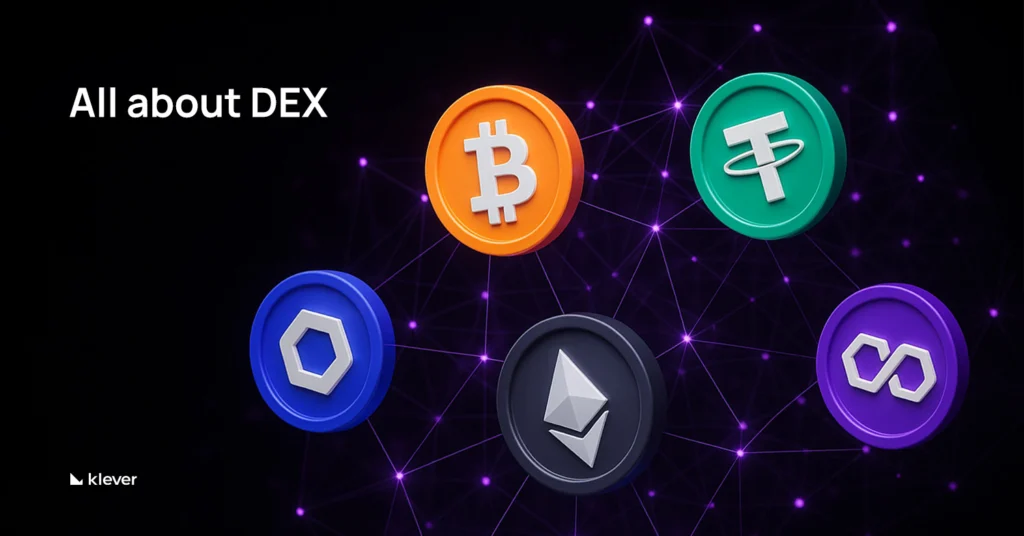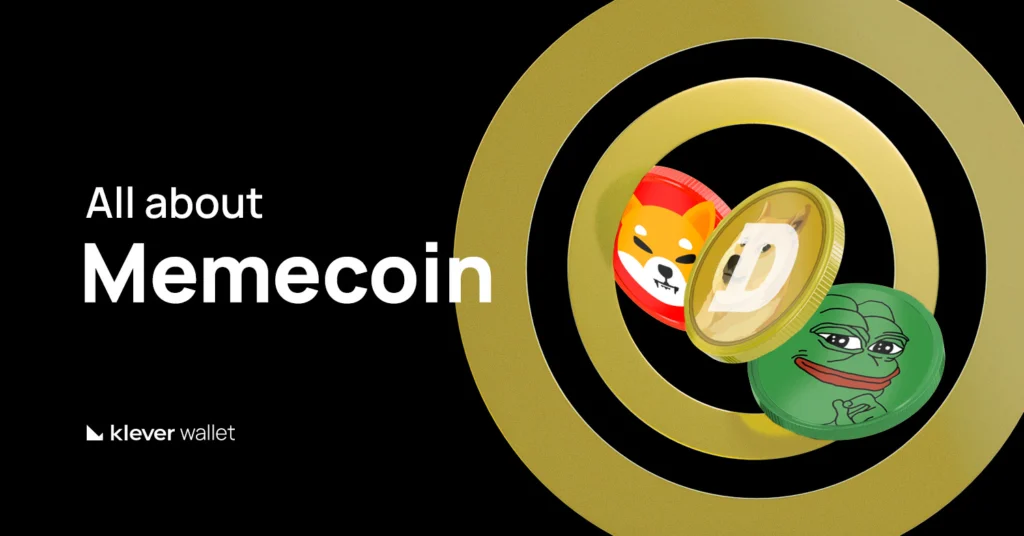
Imagine owning a slice of a building, a gold bar, or even U.S. Treasury bonds — all from your phone. That’s the idea behind Real-World Assets (RWAs): bringing real, tangible assets onto the blockchain.
Instead of staying locked in traditional markets, assets like real estate, bonds, and commodities are being tokenized — turned into digital tokens that anyone can buy, trade, or use in DeFi. This shift is opening the door to new kinds of investments that are transparent, faster, and accessible to anyone, anywhere.
In this article, we’ll break down how RWAs work, their benefits and risks, where they’re already creating real value, and much more.
What Are Real-World Assets (RWAs)?
Real-World Assets, or simply RWAs, are real-world assets — such as real estate, gold, government bonds, or loans — that are brought onto the blockchain through tokenization.
In practice, tokenization means transforming a physical or financial asset into a digital token that represents its ownership or a fraction of it.
For example:
- A building can be divided into multiple tokens, with each token representing a small share of that property.
- A U.S. Treasury bond can be turned into a token representing that investment on the blockchain.
This technology bridges traditional finance with the digital world, making investments more accessible, faster, and more transparent — though it also introduces new challenges and complexities.
How RWA Tokenization Works
Below is a step-by-step walkthrough of the tokenization process, with the important nuances that often get glossed over in high-level articles.
- Asset identification & legal structuring
The real-world asset must be clearly defined — e.g., a parcel of real estate, a pool of private loans, a treasury portfolio. Legal ownership, valuation, and documentation are established off-chain (often via trust, SPV or special purpose vehicle).
Example: A real estate fund sets up an SPV that holds a building; the SPV then issues tokens representing fractional ownership.
- Custody / collateralization & verification
The underlying asset must be held in custody or be verifiably collateralized. For example, gold-backed tokens must have the physical gold in vaults and monthly attestations. Or a fund-token backed by U.S. Treasuries must show the underlying securities and audit them.
- Token creation / smart contract minting
A blockchain (public, private or consortium) is used to mint tokens representing the asset. These tokens embed rules (via smart contract) about transferability, compliance (KYC/AML), rights (dividends, voting), etc.
Important: It’s not just “make a token” — the legal contract connecting token to asset must be solid.
- On-chain listing / secondary market / use in DeFi
Once tokens exist, they can be traded (in some jurisdictions), used as collateral in DeFi, or held as investment. Liquidity is key but currently still a challenge.
For example, tokenized treasuries began to gain traction as DeFi users looked for yield beyond stablecoins.
- Governance / lifecycle management / exit
The issuer manages the asset: maintenance (for real estate), coupons (for bonds), yield distribution, redemptions. Token-holders expect transparency. Secondary markets, audits and regulatory reporting become vital.
Main Types of Tokenized Real-World Assets
Below are some of the major asset classes being tokenised today.
Tokenized Real Estate
One of the earliest and most intuitive: buy a fraction of a property via on-chain tokens.
- Benefits: lowers minimum ticket size, enables global investors, faster settlement.
- Challenges: valuations, legal complexity across jurisdictions, property management.
Tokenized Treasuries and Bonds
Government and corporate debt are being tokenised as well.
- According to CoinGecko, tokenised treasuries grew from US$ 104 million in January 2023 to US$ 917 million by end-2023.
- In 2025 many protocols focus on tokenised U.S. Treasuries, which represent large, liquid, familiar asset classes.
- Benefit: offers fixed-income style yield in on-chain form, can be used as collateral, shorter settlement.
- But the underlying issuer and regulatory wrap-around are crucial.
Tokenized Private Credit / Debt
Private loans (to companies, real-assets, infrastructure) are being packaged and tokenised.
- Example: Private credit represented ~ 65% of the tokenised RWA market in one data set.
- This category is attractive because private credit has traditionally been illiquid and inaccessible; tokenisation promises broader access — but with higher risk.
Tokenized Commodities / Precious Metals
Gold, oil, other commodities are being represented as tokens:
For example, gold-backed tokens (with physical gold in vaults) offer a simpler bridge between off-chain and on-chain.
- Benefits: understood asset class, often lower regulatory barrier.
- Challenges: custody, auditing, token-holder rights to physical asset.
Miscellaneous: Fine Art, IP, Infrastructure Contracts
These are still niche but hold potential: tokenising contracts, royalties, intellectual property, collectibles.
- Complexity is high: valuations are opaque, legal ownership is fuzzy, secondary markets are thin.
- Still worth watching as “the future wave”.
Real Use Cases of Real-World Assets (RWAs)
The rise of RWA tokenization is no longer theoretical — it’s already being applied in multiple sectors, bringing real economic value to blockchain technology. Below are some practical examples that show how RWAs are transforming finance and investment.
1. Tokenized U.S. Treasuries — Institutional Adoption
Several DeFi protocols, such as Ondo Finance and Backed Finance, have issued tokenized U.S. Treasury funds, allowing investors to earn stable yields from government bonds directly on-chain.
The “RWA Report 2025” indicates that tokenized Treasury securities reached US$ 5.6 billion by April 2025, showing strong demand from DeFi users and institutions seeking safe, yield-generating assets.
2. Real Estate Fractionalization
Platforms like RealT and Propy allow users to buy fractional shares of physical properties through blockchain tokens.
This use case makes high-value real estate accessible to global investors with low entry amounts, while all ownership records and dividends are automated via smart contracts.
3. Private Credit and SME Financing
Protocols such as Centrifuge and Maple Finance are tokenizing private loans and credit pools, connecting borrowers to investors through blockchain.
In 2024, Centrifuge reported over US$ 400 million in tokenized real-world credit assets, showing how RWAs can unlock liquidity for small and medium enterprises.
4. Commodity-Backed Tokens
Commodity-backed tokens represent digital assets tied to physical goods such as gold, silver, or oil. This type of RWA is one of the most mature segments in the market, as it combines the stability and traditional value of a physical asset with the operational efficiency of blockchain technology.
An example includes gold-backed tokens like PAX Gold (PAXG) and Tether Gold (XAUT). These tokens allow investors to access the security and intrinsic value of gold, while benefiting from the advantages of digital infrastructure — including instant transfers, divisibility, global liquidity, and decentralized custody.
5. Infrastructure and Carbon Markets
Emerging RWA projects are tokenizing renewable energy credits and carbon offsets, creating verifiable, tradable certificates on-chain.
This approach brings transparency to sustainability markets and enables global participation in ESG-oriented investments.
Why Real-World Assets Are Growing in 2024-2025
According to a 2024 review, the tokenized RWA market (excluding stablecoins) grew ~ 85% YoY to reach US$ 15.2 billion by December 2024.
Including stablecoins, the total tokenised asset market soared to US$ 217.26 billion by December 2024.
By June 2025, the tokenised RWA market had exceeded US$ 24 billion, representing ~380% growth since 2022.
Projections: Some estimates suggest the tokenised RWA market could reach US$ 10.9 trillion by 2030, or even up to US$ 30 trillion by 2034 in bullish scenarios.
Why the surge?
- Institutional interest has ramped up: banks, asset‐managers, funds are exploring tokenised treasuries and private credit.
- Demand for alternatives to low-yield assets has driven interest in tokenised versions of real-world securities.
- Technological and regulatory architecture is improving: token-standards, asset-tokenisation platforms, audit/custody infrastructure are maturing.
Top RWA Projects and Platforms in 2025
Here are some noteworthy platforms driving the RWA space:
- Centrifuge – A protocol focused on tokenising real-world assets (especially invoices, receivables) and connecting them to on-chain lending.
- Maple Finance – A platform that allows institutional credit to be tokenised and accessed on-chain.
- Ondo Finance – Offers tokenised treasury funds and fixed-income-style products on-chain.
- RealT – Real estate tokenisation platform enabling fractional ownership of U.S. properties.
- Tokeny / Securitize – Infrastructure firms enabling compliant token issuance (security tokens, RWAs).
Benefits and Challenges of Real-World Assets (RWAs)
Benefits of RWA
- Fractional ownership: Instead of needing full-asset ticket (like a building), investors can buy tokens representing portions, lowering barriers.
- Improved liquidity (in theory): On-chain tokens can trade 24/7 (in permissioned/qualified setups) and enable global access.
- Transparency & programmable rights: Smart contracts embed rights (dividends, buy-back, voting), and blockchain provides visibility into token holdings and movements.
- Broadening investor base: Global investors can participate (subject to regulatory/compliance), potentially unlocking new capital for TradFi assets.
- Innovation in asset usage: Tokens can be used as collateral in DeFi, cross-border funds, layered structures — turning previously illiquid assets into building blocks.
Challenges and Risks of RWA
- Regulatory & legal uncertainty: The underlying asset class may be subject to securities, commodities or banking regulation; tokenisation does not remove that.
- Custody / asset-representation mismatch: Ensuring the token truly represents the underlying asset is critical — e.g., a token might say “we hold the gold” but audits/certificates may be weak.
- Liquidity gap: Despite tokenisation, many RWA tokens exhibit low secondary trading volumes, long holding periods, limited active investor participation.
- Valuation and transparency issues: Especially in private credit, art, infrastructure — valuing the asset is complex, and token-holder rights may be unclear.
- Technology / smart contract risk: Bugs, chain vulnerabilities, oracle risk (for off‐chain data), interoperability issues.
- Jurisdiction and compliance risk: Different countries have different rules; for some tokenised assets the regulatory wrap is unclear.
- Over-hype / speculation danger: As some commentary notes, if tokenisation becomes just a wrapper for crypto speculation instead of “real asset + promise”, risk rises.
The Future of Real-World Assets in Crypto
Looking ahead, here are some key themes and what to watch:
- Scaling bigger asset classes: More treasuries, corporate bonds, infrastructure debt getting tokenised. That means larger pools of capital entering the space.
- Secondary market liquidity is critical: Tokenisation alone doesn’t guarantee tradability; markets need depth, regulatory clarity and interoperability.
- Regulatory frameworks will shape winners/losers: Regions with clear rules (EU DLT law, Singapore, UAE) will likely get ahead.
- Technology and infrastructure maturation: Token standards, oracle services (proof of reserve), governance frameworks will become more robust.
- Global expansion and emerging markets: Tokenisation may open assets in Latin America, Africa, Southeast Asia where capital markets are less efficient.
- “Programmable assets” beyond trad maps: Not just buy-tokens, but use these tokens in digital finance: as collateral, in layered structures, fractionalised ownership, shared yield-streams.
Forecasting numbers: Some reports suggest tokenised assets could hit US$ 10-16 trillion by 2030, and even up to US$ 30 trillion by 2034 in bullish cases.
How to Invest Safely in Real-World Assets
- Verify the underlying asset
- Ask: What is the physical or financial asset? Where is it? What legal entity holds it?
- Look for audit reports, custodial statements, proof of reserve.
- Ask: What is the physical or financial asset? Where is it? What legal entity holds it?
- Check the token issuer and legal wrapper
- Who is issuing the token? Is the token backed by the asset? What contract binds the token-holder to rights?
- Is there a clear SPV and legal recourse if something goes wrong?
- Who is issuing the token? Is the token backed by the asset? What contract binds the token-holder to rights?
- Regulatory compliance and jurisdiction
- Which jurisdiction governs the asset and token? Is it securities regulated? Are there investor restrictions (accredited only etc.)?
- Does the platform respect KYC/AML? Are tokens transferrable or whitelisted?
- Which jurisdiction governs the asset and token? Is it securities regulated? Are there investor restrictions (accredited only etc.)?
- Secondary market and liquidity
- Can tokens be traded? Where? How many holders? What are typical holding periods?
- If you need exiting options, a thin secondary market is a risk.
- Can tokens be traded? Where? How many holders? What are typical holding periods?
- Smart contract and technology risk
- Are smart contracts audited? Who manages the oracle/custody infrastructure?
- Beware of over‐complex protocols with many moving parts.
- Are smart contracts audited? Who manages the oracle/custody infrastructure?
- Alignment of interests
- Are the asset originators, custodians, token issuers aligned with token-holders?
- For example: in real-estate tokenisation, who manages the building, what happens if maintenance cost rises?
- Are the asset originators, custodians, token issuers aligned with token-holders?
- Diversification & risk management
- As with any investment, don’t allocate your entire portfolio to one RWA token or one asset class.
- Consider tokenised real estate + tokenised treasuries + tokenised commodities for spread.
- As with any investment, don’t allocate your entire portfolio to one RWA token or one asset class.
Manage Real-World Assets (RWAs) with Klever Wallet
Klever Wallet has expanded beyond just cryptocurrencies and real-world asset tokens: you can now access over +30 tokenized assets, including major companies such as Apple, Amazon, and NVIDIA — directly through the wallet interface.
- Self-custody: private keys stay on your device; no intermediaries.
- Multi-chain: manage RWA tokens across supported networks, including projects building on Klever Blockchain (KVM).
- Compliance-aware: add only verified contracts; monitor issuer docs and audits before holding any RWA.
- Built for daily use: one interface to view balances, histories, and perform transfers with clear fees.
Tip for safer RWA investing: verify the underlying asset, the legal wrapper (SPV/trust), audit reports, and secondary-market liquidity before adding any token to your wallet.
Download Klever Wallet to manage RWAs with self-custody.




